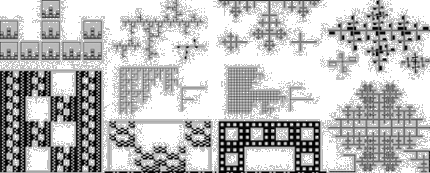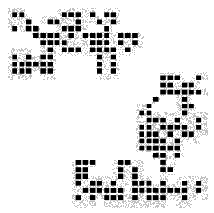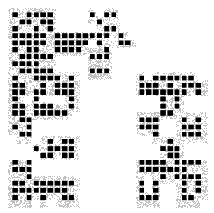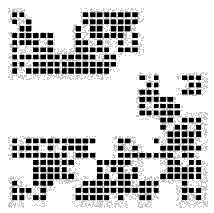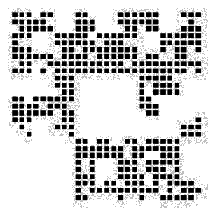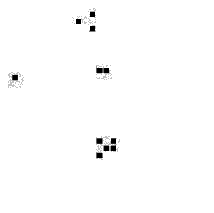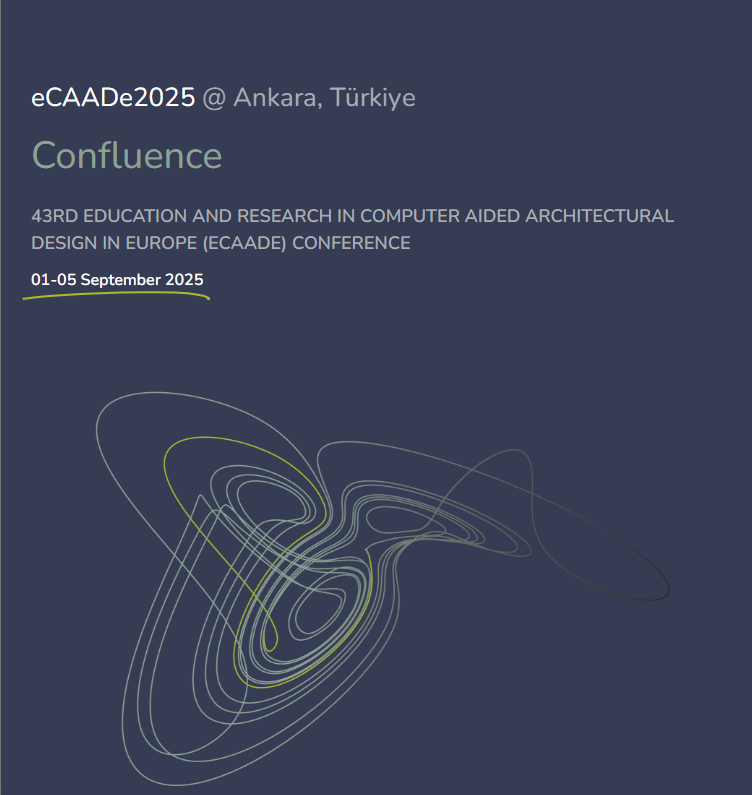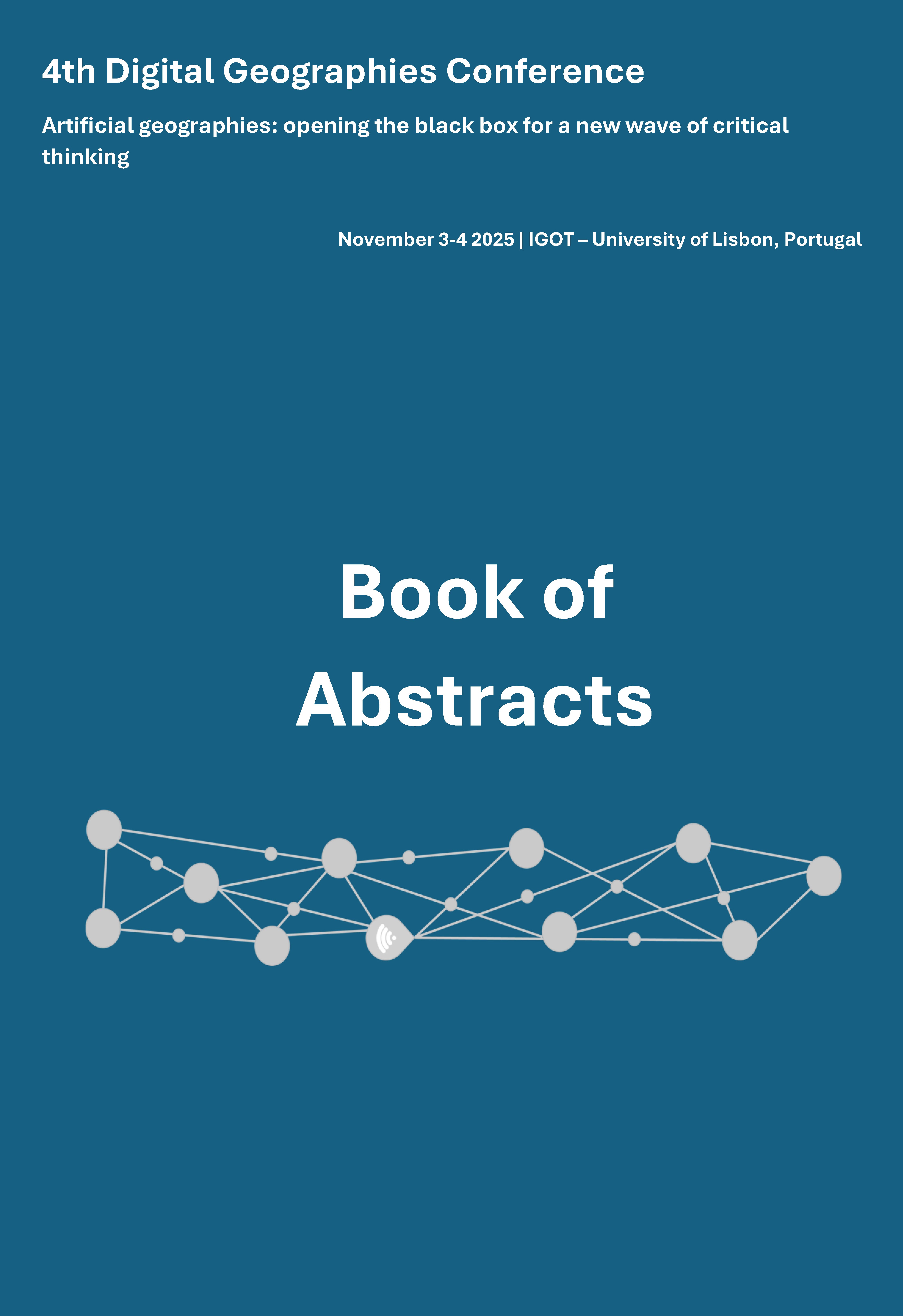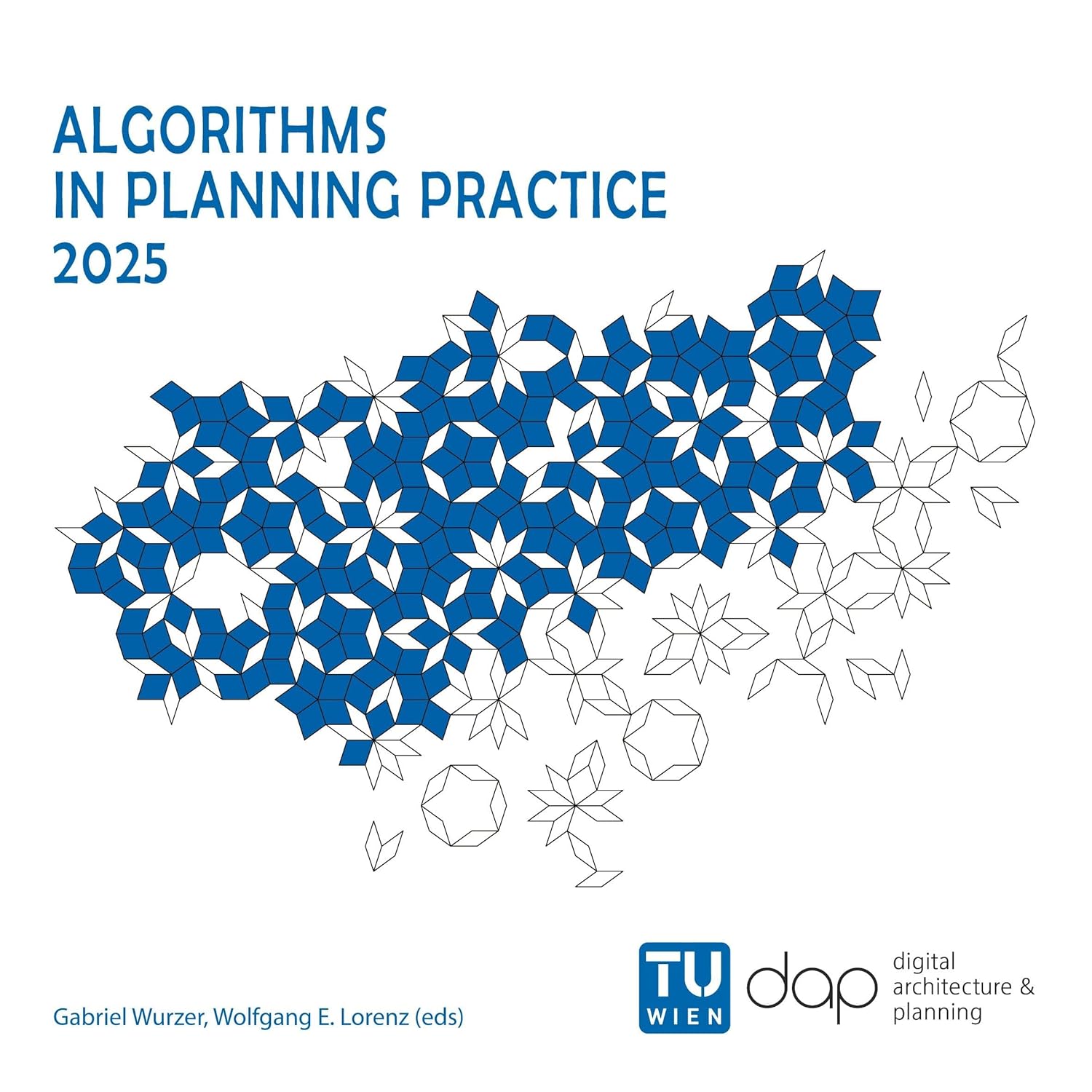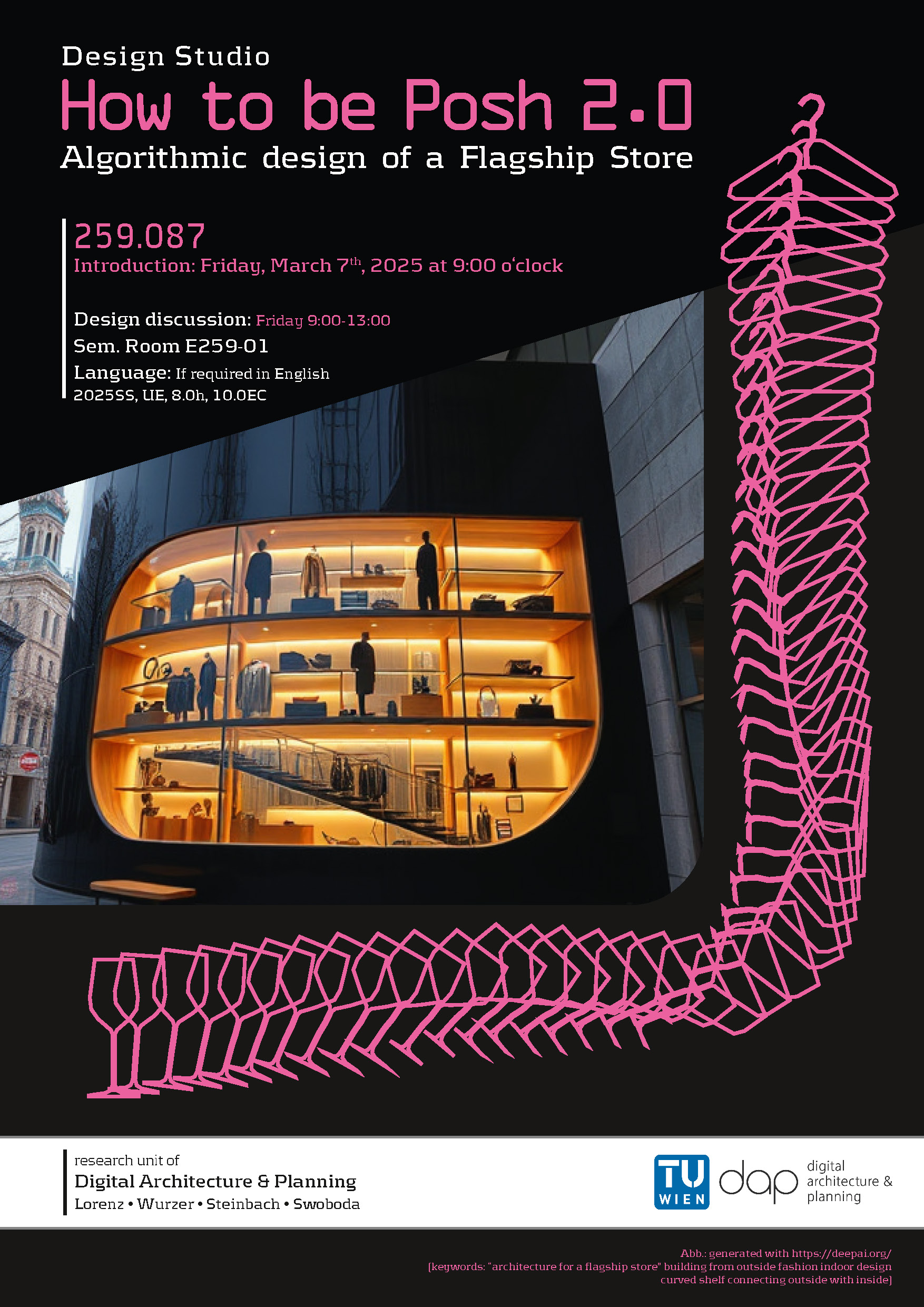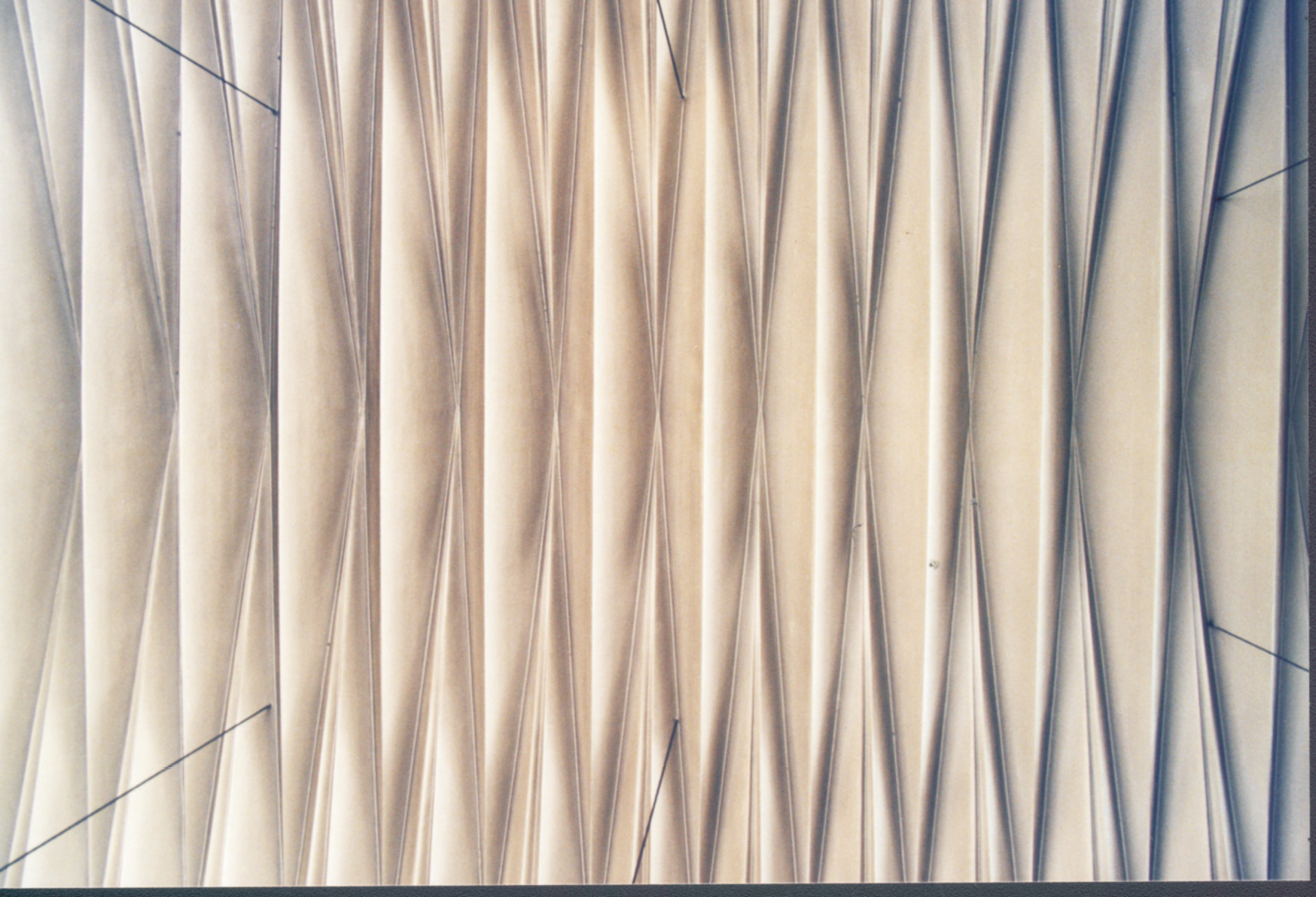The fractal dimension of a fractal dust, produced in such a way, can be measured with the aid of the box-counting method, using the formula

- introduced in chapter "4.2.3 Box-Counting Dimension 'Db'". There "Nsn" represents the number of boxes that remains at a certain grid size "sn" - stage -, which is defined as the factor of reduction or the reciprocal value of the number of columns of the specific grid. Relating the probability to the fractal dimension it turns out that the fractal dimension decreases when the probability becomes smaller and that there exist some upper and lower limits. Thus the upper limit is given when all squares remain at each stage, which means a probability equal to one and a fractal dimension of two. The lower limit of the example with a division into nine pieces at each stage is given by one ninth, because then only in the ideal case one square remains at each step until infinity, while in reality no or two squares may also be likely - if only one square is counted at each step, the fractal dimension decreases to zero: log1-log1=0. Finally in the case of a probability lower than one ninth, it is unlikely that any square will remain at some stage[02].
The "curdling" process, as described in this section, produces a fractal dust that may act as a first sketch of a site plan for one-family houses or row houses, the fractal dimension indicating the density. In this connection the environment, a mountain ridge or the like, can be used as an instruction for the "curdling" process in so far that the probability can be derived from the measured fractal dimension of this surrounding. But repeating the "curdling" process with the same starting options, that is probabilities, results in different shapes, which is also pointed out by different actual fractal dimensions - the theoretical fractal dimension is generated with the remaining boxes of the ideal case of a certain probability. Thus a couple of "site-plans" of the same probability can be generated, where finally the most useful "site-plan" elaborated further by adapting it to the surroundings, such as existing roads, hills or rivers.

